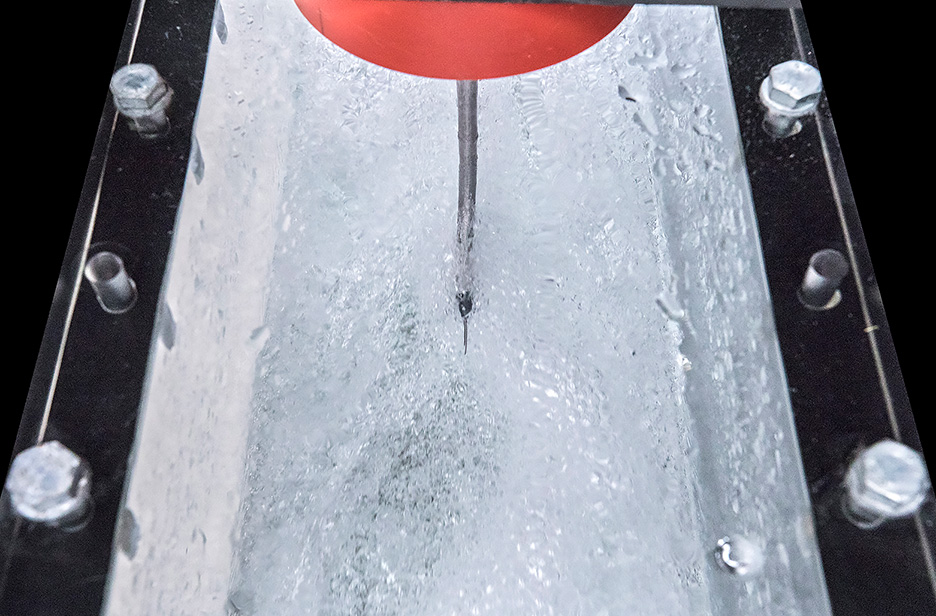Previous measurements have systematically underestimated the velocity of turbulent gas-liquid flows. The observed deviations may have far-reaching implications for engineering applications as well as for the understanding of coastal and riverine environments. This reports a recent D-BAUG study in the journal Nature Communications. In collaboration with international partners researchers have now developed a correction scheme for such measurements.
Strong turbulences in fluid flows may lead to a mixing of gas and liquid. Such gas-liquid flows occur in many forms, both in technical systems (e.g., in nuclear reactors and hydroelectric power plants) and in nature as water-air flows (e.g., in river rapids and breaking waves).
Since the 1960s, engineers have used special probes to measure such flows. These intrusive flow probes consist of two needles that pierce passing bubbles and droplets. The goal of the study was to investigate this process in more detail to determine the capabilities as well as the limitations of this long-used measurement technique.
To this end, the researchers compared measurements from intrusive probes with laser velocity measurements. The results showed that the probes consistently measured lower velocities than the laser device. The reason is that the interaction of the probe tips with the passing bubbles caused the latter to lose speed. Depending on the application, this could lead to systematic deviations of up to 20 percent, reports the study.
"The newly developed correction scheme enables far more accurate velocity measurements and thus a better understanding of the actual underlying processes in such flows," says study leader Dr. Benjamin Hohermuth of the Laboratory of Hydraulics, Hydrology and Glaciology (VAW).
Reference:
Benjamin Hohermuth, Matthias Kramer, Stefan Felder, Daniel Valero, Velocity bias in intrusive gas-liquid flow measurements, Nature Communications (2021), doi: 10.1038/s41467-021-24231-4
Learn more about the Research Group Hydraulic Engineering
The study is the result of an collaboration with researchers at IHE Delft, UNSW Canberra and UNSW Sydney.








